Amie
At ElleHacks 2020, my team created an approachable iOS companion app that would teach young adults to recognize their emotions using natural language processing and provide resources to develop emotional intelligence.
Research
Prototyping
Business Modelling
Figma
iOS
36 Hours

Background
Many existing therapy apps on the iOS app store have limited input options for the user, are poorly rated, and don't provide resources to alleviate loneliness. We noticed, that while the audience of the therapy apps faced restrictions in expressing themselves, they were inquisitive and continued to track their emotions.
Impact
Give students and young adults an experience that is simple, reduces input friction, and provides resources to navigate different emotions.
My Work
I conducted market research and competitive analysis. Using the pain points and constraints I focused on the flow of conversation between the app and users. I prototyped the final products and developed a scalable business plan.

DEFINE
Establishing Goals
What do we want to achieve with this project?
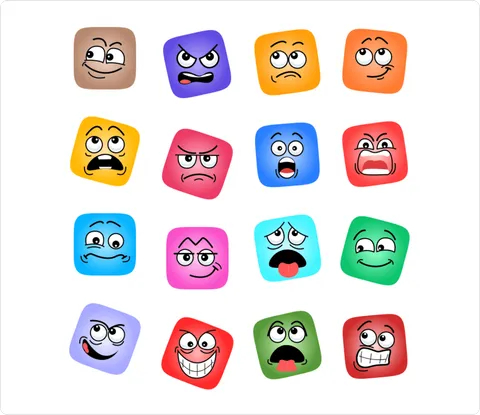
Track Emotions
Understanding emotions helps us manage them. By being aware, we can make informed decisions, prevent or avoid triggers of negative emotions, and communicate clearly to get support.

Provide Resources
Knowing the tools to manage emotions can have positive outcomes despite negative emotions. Resources can offer: reflection, perspective, acceptance, and help in making rational choices.

Build Emotional Intelligence
Building emotional intelligence enhances self-awareness, improves decision-making, and fosters stronger, more meaningful connections in both personal and professional life.

Identify Patterns
Provides insight into recurring triggers, reactions, and behaviours, allowing people to recognize and address unhelpful habits, manage stress more effectively, and develop healthier responses to challenges.
RESEARCH
Learning about the audience
What do people think about loneliness?
Starting post-secondary means leaving behind valuable support systems. We wanted to understand how students dealt with this.


Insights
01
02
03
04
RESEARCH
Market Analysis
What other solutions (apps) already exist?
We need to understand which apps users are gravitating towards. What benefits do these applications provide? What are the disadvantages?

Key Points
RESEARCH
Competitor Analysis
What makes Woebot an award-winning app?
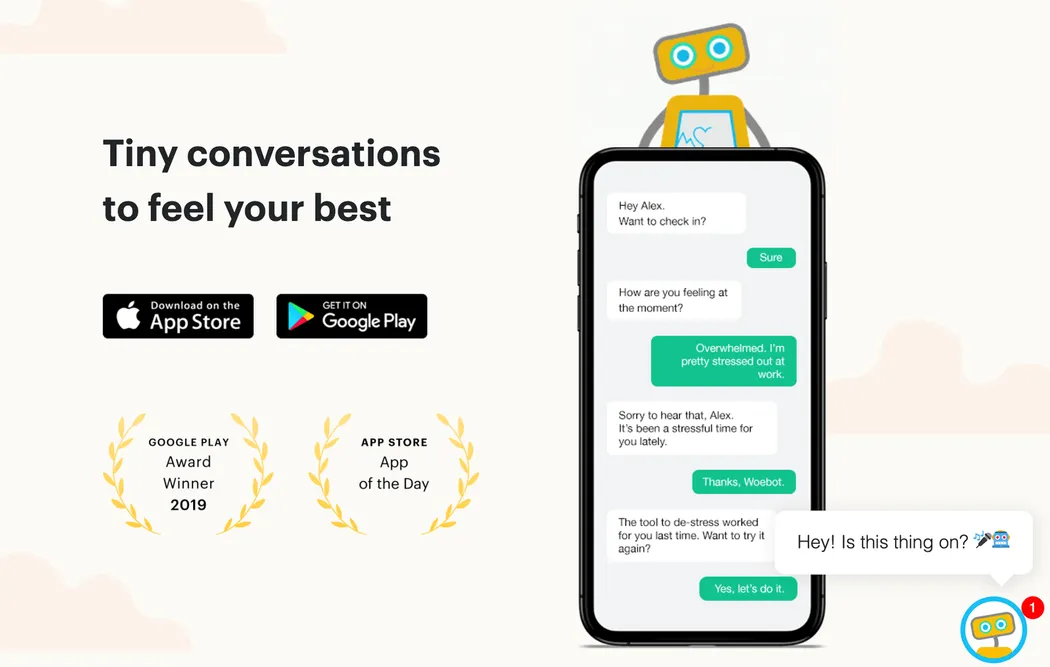
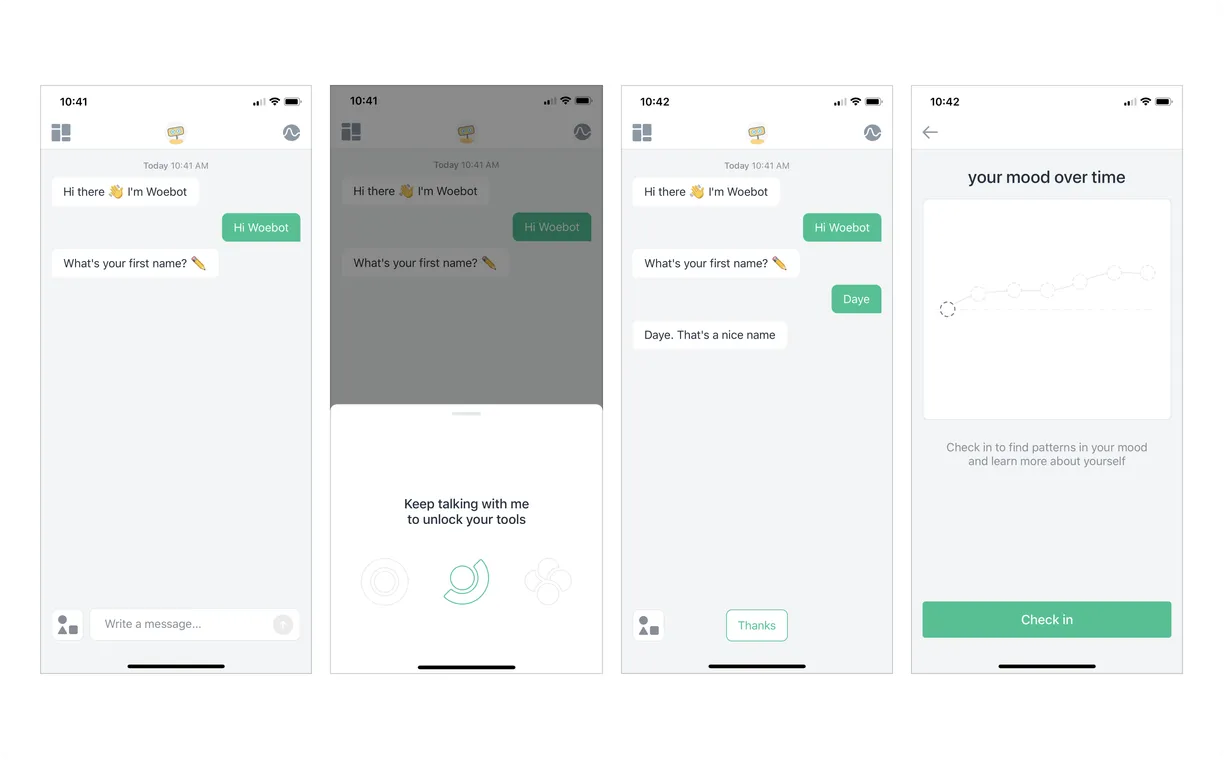
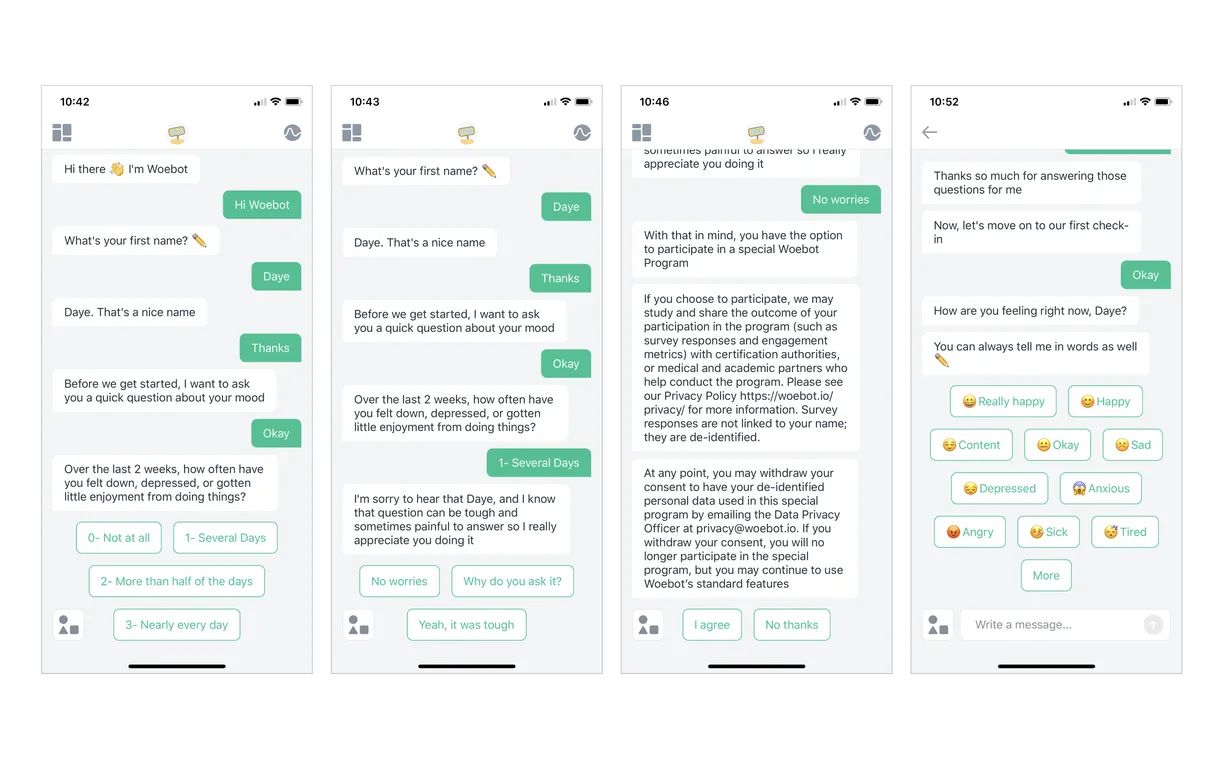
Strengths
- Daily check-ins with pre-filled answers
- Research-based Cognitive behavioural therapy (CBT) to help identify feelings
- Links to external quizzes & videos to support discovery of thoughts
- Empathetic and validating responses
- Varied types of replies: text, emojis, videos, gifs
- Free of cost and password-protected
Weaknesses
- Asks too many questions- feels overwhelming
- Restricted responses feel robotic and limited
- Unable to provide much correction in response to free text
- Typically need to scroll to find past examples
- Can be repetitive/Get in a feedback loop
- Conversation flow is not natural, users may feel disconnected
- Only focused on therapeutic solutions
Persona
Meet the user
Although there are multiple user groups, this case study will focus on the injured person's perspective.

Final Designs
Amie ― Therapy Reimagined

1. Personalized Question
Prompt is focused on the user, UX writing similar to how friends and family would encourage and stimulate conversation.
2. Audio Input
Talking removes barriers, allowing the user to share raw feelings. Conversation starts with single button and feels natural.
3. History
Creates "journal-like" experience for users to track, revisit, and learn from their emotional history.
4. Recommendations
Insightful recommendations are accessible regardless of user's daily input. They will help the user learn about what to do in various emotional states.
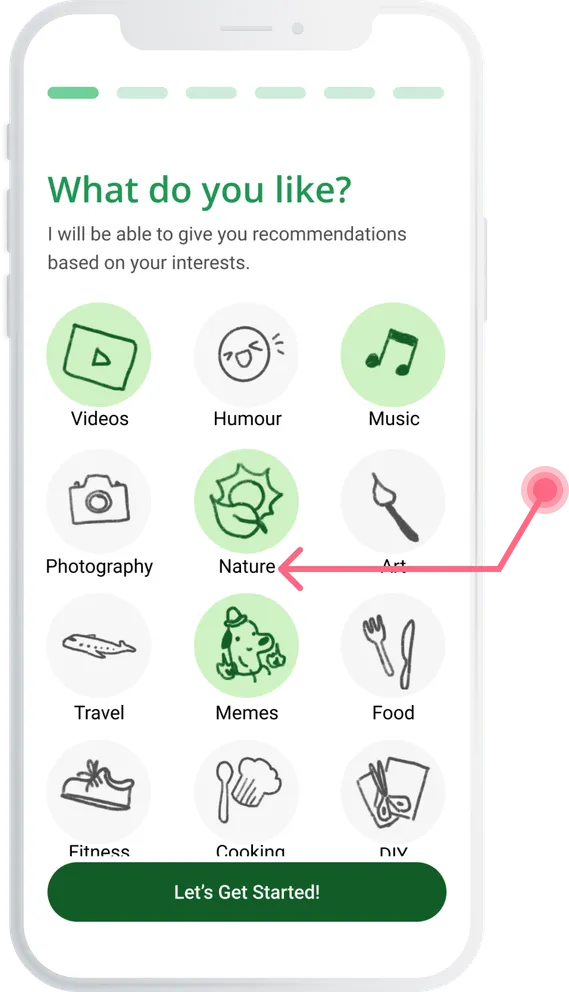
Onboarding
Getting familiar
Understanding the user will allow the algorithm to create recommendations based on their preferences.
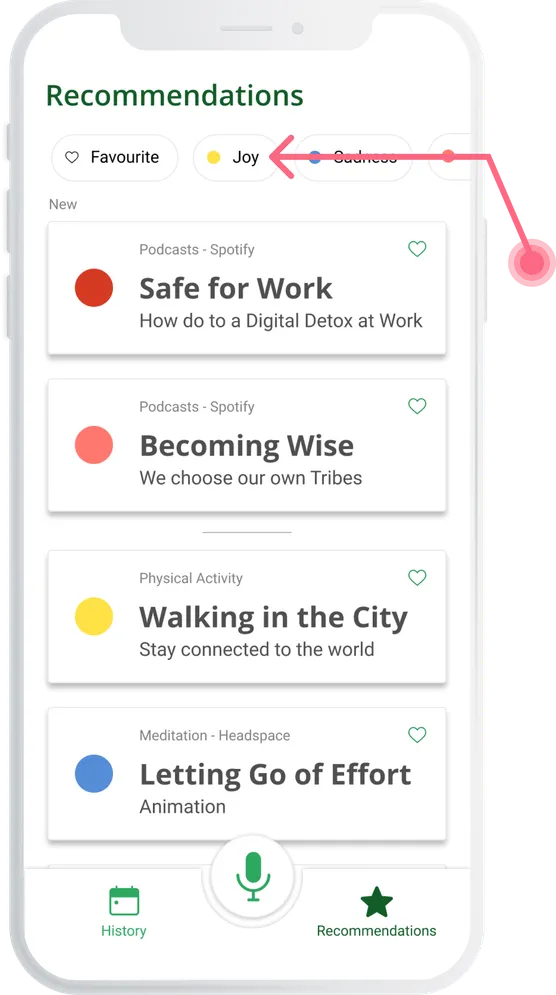
RECOMMENDATIONS
Going beyond the emotions
Resources are based on emotions identified in a conversation with Amie, but are also accessible through the main navigation.
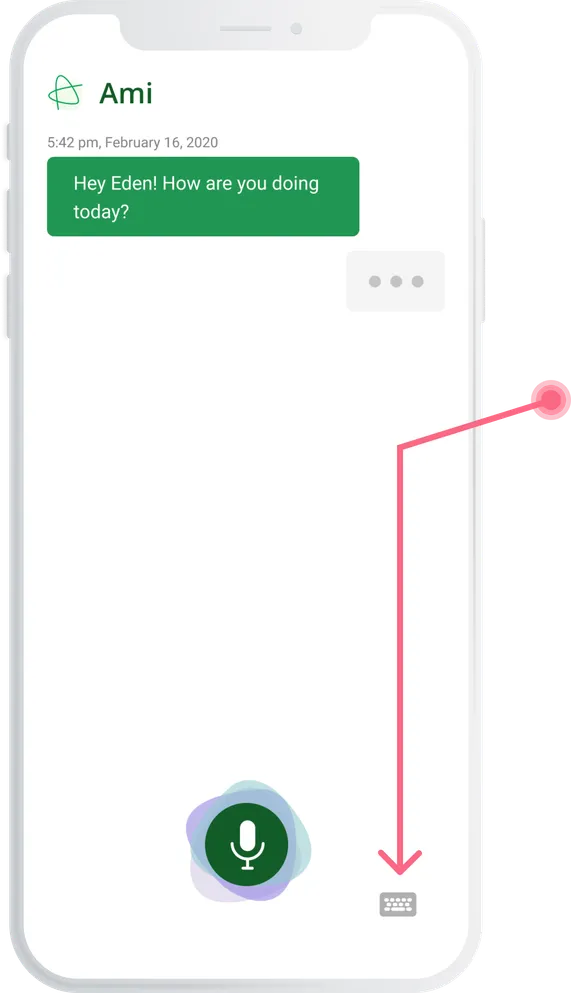
ACCESSIBILITY
Various use cases
Amie offers text input. Users can text if they require or prefer chatting instead of using the voice function.
Identifying Emotions
Through ML (sentiment analysis), Amie identifies that Eden is excited and celebrates with him.
Why is this important?
- When referring to history for recommendations
- Helps recognize emotional patterns
- Over time, creates self-awareness
- Equipped with tools to develop emotional intelligence
Tracking Emotions
Amie further helps Eden with identifying the emotions its responding to Eden with.
Why is this helpful?
- Idea of "talking to yourself like you're talking to a friend"
- Help understand despite experiencing negative emotions, they must be kind to themselves
Users are able to talk, chat, vent, track, acquire resources, and learn from Amie.
UI Design
Style Guide
Green tones are commonly associated with nature, growth and health, representing a link to wellness, healing, and renewal.
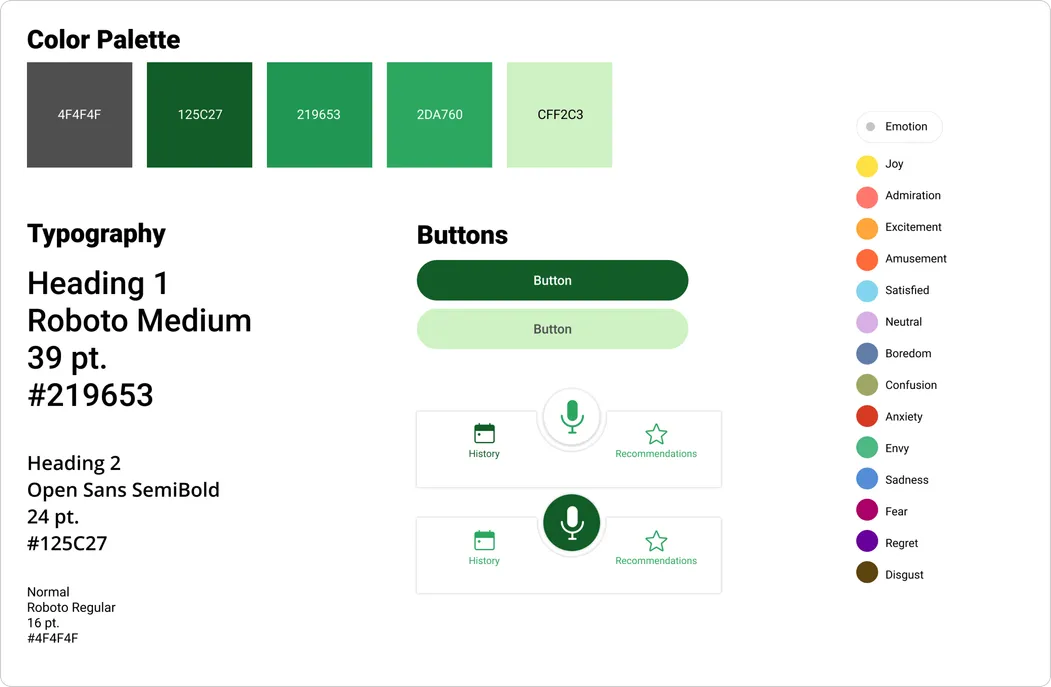
SCALABILITY
Business Modelling
Envisioning Ami's growth potential
To ensure long-term sustainability and value creation, I explored various revenue streams and partnership opportunities.
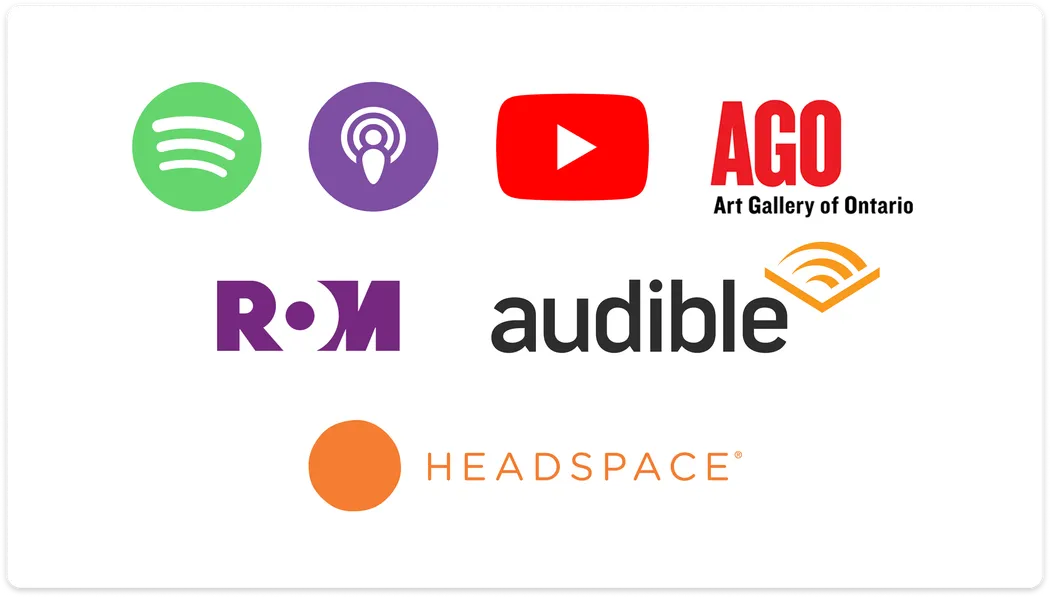

REFLECTIONS
Lessons Learned
What I learned from this experience

